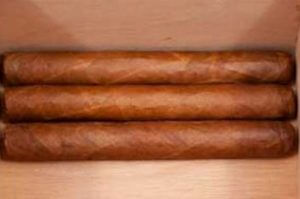As most people whom have had any familiarity with cigars will be able to tell you, wood (that’s the flavor of it, not actual wood itself) is an integral part of most cigar’s taste package. This is because the flavor is so instantly recognizable as well as so consistently predominant when it comes to cigars. Generally speaking, these flavors are typically separated into three primary categories. All wood type flavors are generally grouped under “plant” notes by most modern cigar enthusiasts; the three primary sub categories are as follows as follows, cedar, oak and smoked wood.
Cedar is usually going to be the kind of wood taste one is likely to get the most often. Most of the cedar flavor itself comes from cedar aged humidors, which are popular among smoking aficionados. A stogie might also be imbued with a cedar scent and flavor from being long kept in a dark-lit, dry cedar cabinet. Put your humidor in your cabinet, leave your sticks to settle and age and, viola, you’ve got cedar flavor.
Next up we’ve got oak, now this is a much more uncommon flavor and is typically only achieved through rigorous cask aging. Though it should be noted here that some types of tobacco do possess a slight “oak” taste and aroma naturally, however, oak cask aged sticks are your safest bet to ensure you get the woody taste and aroma you desire.
Lastly, we’ve “smoky wood.” This particular kind of flavor is generally associated with hickory wood and mesquite. Smoked wood cigars are generally much harder to come by than cedar (at least those that actually taste good) and so may take a bit of digging to uncover.
Understanding the various wood flavors might seem trivial but in understanding them and being able to differentiate between them will allow you a greater deal of precision when blending or when pairing your next woody stogie up with a nice glass of wine or whiskey.

